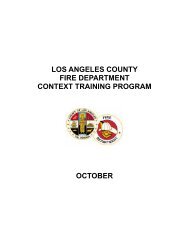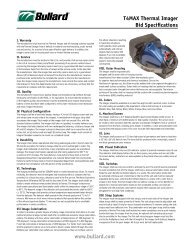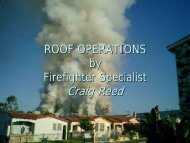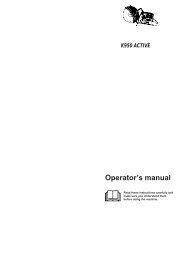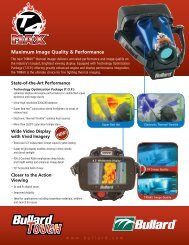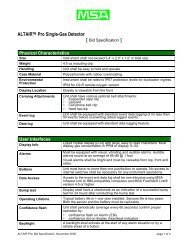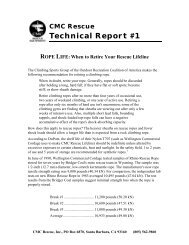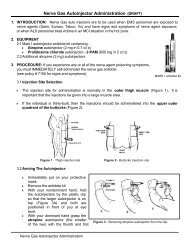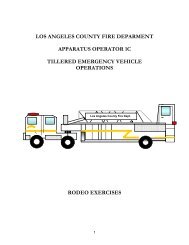WM, Workshop Manual, K650, K700, K950, K1250, 2001-06, Power ...
WM, Workshop Manual, K650, K700, K950, K1250, 2001-06, Power ...
WM, Workshop Manual, K650, K700, K950, K1250, 2001-06, Power ...
You also want an ePaper? Increase the reach of your titles
YUMPU automatically turns print PDFs into web optimized ePapers that Google loves.
Cylinder and piston<br />
5<br />
The guide pin for the piston ring has been pressed<br />
up through the piston head.<br />
Deep and irregular grooves caused by a loose<br />
circlip. Here on the piston's inlet side.<br />
Irregular grooves on the piston's inlet side caused<br />
by a broken bearing cage.<br />
Loose vibrated guide pin for<br />
piston ring<br />
Excessively high engine revs can result in<br />
the piston ring ends hammering against the<br />
guide pin when the piston ring moves in its<br />
groove. The intensive hammering can drive<br />
out the pin through the head part of the<br />
piston and also result in serious damage to<br />
the cylinder.<br />
Damage on circlips for the piston<br />
bolt<br />
Excessively high engine revs can cause the<br />
circlips for the piston bolt to vibrate. The<br />
vibrations cause the circlip grooves to wear<br />
out, which in turn results in a reduction of the<br />
tensioning of circlips. The circlips can<br />
therefore loosen and cause damage to the<br />
piston.<br />
Bearing malfunction<br />
Malfunctioning of the crank shaft or connecting<br />
rod bearings is usually the result of<br />
excessively high engine revs, which result<br />
in overloading or overheating of the bearing.<br />
This in turn can imply that the bearing<br />
needles or balls slip instead of rotating,<br />
which can result in the bearing cage breaking<br />
up.<br />
The broken parts can become jammed<br />
between the piston and the cylinder wall and<br />
result in damage to the piston skirt.<br />
Damaged parts can also pass up through<br />
the cylinder’s transfer ports and result in<br />
damage to the piston sides and head, and<br />
the cylinder’s combustion chamber.<br />
Foreign objects<br />
Everything that enters the engine through the inlet port, apart from clean air and clean<br />
fuel, results in some form of irregular wear or damage to the piston and cylinder.<br />
This type of increased wear can be noticed on the piston’s inlet side, beginning at the<br />
lower edge on the piston skirt.<br />
The wear is caused by poorly filtered air which passes through the carburettor and into<br />
the engine.<br />
Small scratches and a dull, grey surface on the<br />
piston's inlet side resulting from fine dust particles.<br />
53



